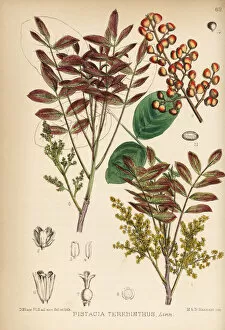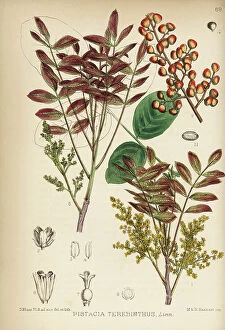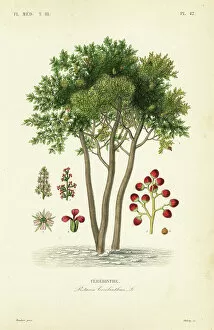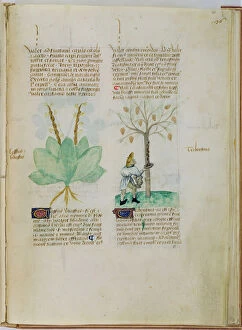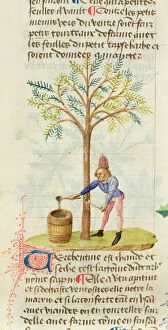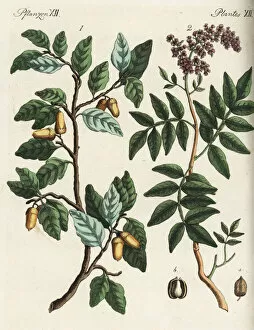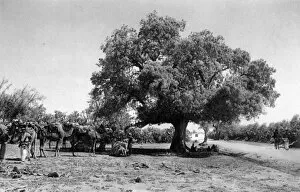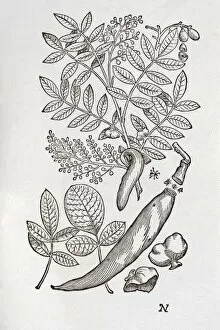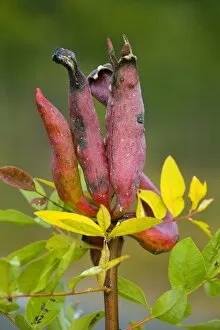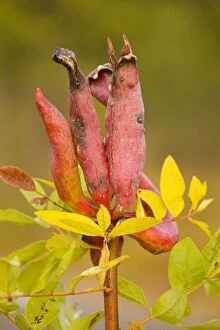Terebinth Collection
The Terebinth tree, also known as the turpentine tree or Pistacia terebinthus, holds a significant place in history and natural history
For sale as Licensed Images
Choose your image, Select your licence and Download the media
The Terebinth tree, also known as the turpentine tree or Pistacia terebinthus, holds a significant place in history and natural history. Found mainly in the Holy Land, this majestic tree has been documented since ancient times. In manuscripts like Ms Lat 993 L. 9. 28 fol. 136r and Ms Est 28 M. 5. 9 fol. 165r, we can see illustrations of people collecting turpentine from the Terebinth tree, as described by Pedanius Dioscorides in his Tractatus de Herbis during the first century AD. This vellum artwork showcases the importance of this plant throughout centuries - from its use in medicinal remedies to its role in various industries such as perfumes and varnishes. The Terebinth's significance is not limited to historical texts alone; it also plays a vital role in Biblical natural history. Mentioned numerous times within biblical scriptures, it symbolizes strength and resilience. Furthermore, galls caused by an aphid called Baizongia pistaciae can be found on these trees during autumn in Provence. These peculiar growths add another layer of intrigue to the already fascinating world of Terebinths. From its beautiful foliage to its versatile uses and cultural significance, there is no doubt that the Terebinth tree continues to captivate our attention even today - a testament to nature's enduring wonders.

